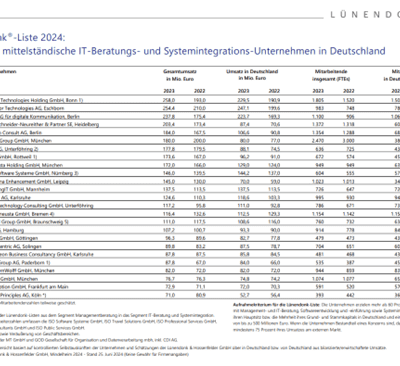The topic of air taxis is currently on everyone’s lips and is being discussed at various levels. The range of applications extends from unmanned drones for logistics to air taxis that link traffic hubs such as airports and railway stations, or platforms that expand the mobility ecosystem. Looking at congested roads, especially in metropolitan regions, vertical mobility is often referred to one key dimension in the mobility transition process. It is also worth taking a look at visions of the future of mobility and the design of cities: these are drafted by a wide variety of industries, such as automotive companies or urban planners. It becomes apparent that vertical mobility will become reality. However, not only in the form of aerial vehicles, but also in the form of gondolas that connect the mentioned mobility hubs.
Flexibilization as a key indicator for premium mobility
In cities like Medellín (Colombia) or La Paz (Bolivia), there are already cable cars that connect the city centre with the different districts. The reasons for building them, especially in South America, are different from those in Western countries. Nevertheless, this kind of locomotion has already proven itself and is also discussed in cities like Munich. Advantages, such as a fast and cost-effective implementation compared to underground and suburban trains as well as the space-saving design are primary arguments here. However, the low degree of flexibility and the small number of passengers that can be transported per hour are to be seen as negative aspects. A further component in vertical mobility are air taxis, which can counteract the disadvantages mentioned above. In this context, the issue of “flexibilization” plays an important role, which is particularly crucial in the premium segment. This interaction shows that the mobility ecosystem should be developed and designed in a holistic way in order to counter the disadvantages and close the infrastructural gaps and thus design an efficient and sustainable system that also addresses the heterogeneous needs.
Overarching orientation of the business models
Behind every form of transportation, whether horizontal or vertical, there are many different business models. When it comes to air taxis, the business models can be divided into three overarching orientations: the manufacturer (OEM), the mobility platform and the operator of the service. These orientations can already be found in mobility companies today. Thus, the business processes extend from product development, logistics, production to operation, in the form of a platform-based mobility solution. But also warehousing, bill of material or configuration options are based on the classic processes of automotive companies.
Political conditions pave the way for commercialisation
The topicality and potential of air taxis is also being given an enormous boost by the latest debates at various political levels in Germany: at state level, Baden-Württemberg is taking the lead here with two test fields for drones and air taxis. On the federal level, Transport Minister Andreas Scheuer made a public statement on the subject of air taxis in May 2020 and would like to further advance the political framework conditions, which could have a positive effect on the commercialisation of drones and air taxis. Studies show that the basis for a successful positioning in the market, is the political framework. These are decisive in order to further develop aerial vehicles accordingly and to adapt them to regulatory frameworks, which will have an effect on both product and business model development. In addition, the Minister of Transport Scheuer discussed the space required for take-off and landing of the flying objects. Flat roofs of shopping centres and multi-storey car parks were discussed, which could be an important pillar for successful implementation in the mobility ecosystem. This example shows the complexity in the system and the extension by further stakeholders. Furthermore, topics such as geo-fencing and the routing of taxis also play a role. This means that there will be air sections where flying is not allowed and this will be controlled by software and violations will be reported. In addition, the operation models will differ, which means that there will be providers or regions that are based on fixed routes and therefore more similar to public transport. Others will offer individual routes based on customer needs. This is also where the differentiation between efficiency and costs will take place, and thus a distinction between mass and premium mobility. It can be assumed that this new type of mobility will begin with a rigid model, which will then be successively individualised in order to be able to respond to the most diverse needs. Here, too, we will see different stages of development, which will differ locally.
Electrification of the flying objects
While looking for example on the German companies Volocopter and Lilium, it is also exciting that the focus is on the electrification of the flight taxis. Airbus is also working exclusively on an electric drive train. This leaves room for interpretation: the focus of air taxis on metropolitan regions, which are facing the collapse of the existing infrastructure due to increasing urbanisation and the rise in demand for individual mobility, and the associated regulations on horizontal mobility. These regulations, however, also reflect the overriding climate goals that were signed in the Paris Climate Agreement. According to this, an alternative drive train – electrification as a first step – is being relied upon in order to be able to survive in the market in the long-term and sustainably and to react proactively to the overriding (climate) goals. This is also reflected in the vision and long-term planning of air taxis. These should be an active component in the transformation process and complement the mobility system. Progress in the hydrogen fuel cell could represent a further trend-setting innovation in the medium-term; whether and to what extent further drive train technologies for air taxis will be considered is not known at this time.
Strategic partnerships - entry of companies from outside the mobility industry
Strategic partnerships are becoming increasingly important in relation to (unmanned) flying objects and there are a large number of other players – even from supposedly companies outside the mobility branch. Google and Boing have a stake in “Cora”, Toyota and Intel have invested in the American company “Joby Aviation”, and prominent investors are also lining up at the German companies Volocopter and Lilium for the promising model of air taxis. In terms of product design and technology – but not in terms of electrification – the flying objects differ: with the aircraft concept on the one hand and the helicopter concept on the other. The strategic partnerships also show how important this progress is for the mobility system. Consequently, the segments are being expanded, from an automotive company to a mobility company that would be able to cover all three segments – manufacturer, platform and operator. These strategic partnerships allow to use existing know-how.
Conclusion
Considering the dynamics in the market, the strategic partnerships of established mobility companies and industries outside the industry, the political debates, the increasing demand for individual mobility and the ongoing urbanization, it can be assumed that air taxis will be an important pillar in counteracting the infrastructural collapse. Work is currently underway on both market entry and business models. As described in this article, success depends on a variety of variables: the political framework, social acceptance, efficiency (both in terms of load/usage and energy consumption), customer experience in a holistic system and the link to the existing infrastructure. We are excited to see to what extent this new way of locomotion will be implemented in the entire mobility ecosystem. Back to the future has already begun.
Gladly we inform you also personally
We look forward to hearing from you.



